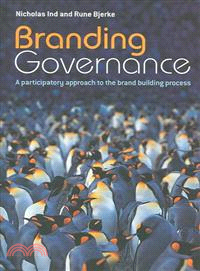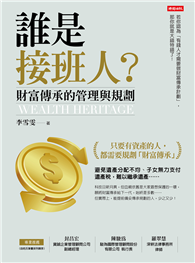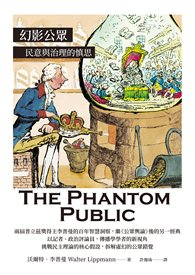| FindBook |
|
有 1 項符合
rune bjerke的圖書 |
 |
$ 2430 | Branding Governance - A Participatory Approach To The Brand Building Process
作者:NICHOLAS IND / 譯者:RUNE BJERKE 出版社:JOHN WILEY & SONS,LTD 出版日期:2007-03-30 規格: / 精裝 / 288頁  看圖書介紹 看圖書介紹
|
|
|
- 圖書簡介
Branding Governance challenges traditional thinking on brands. Bestselling author Nicholas Ind and cross-cultural communications expert Rune Bjerke expose the flaws in a marketing-led approach to brand-building, and offer in its place a highly-participative, organization-wide process that delivers fulfillment to employees and value to customers.
Drawing on a wide range of sources, they show that the key to a participatory approach is that customers and other external audiences must join managers and employees as active participants in defining and developing the brand. This requires the relationship between organization and customer to be one of trust, respect and authenticity. - 作者簡介
NICHOLAS IND is a writer and a partner in Equilibrium Consulting. Previously he ran IconMedialab’s brand consultancy arm in Sweden, had his own branding consultancy in the UK, was a Director of a design group and was an Account Director in an advertising agency. He is the author of a string of successful books including The Corporate Image, Living the Brand and the authorised biography of Terence Conran. www.nicholasind.com
RUNE BJERKE is an Associate Professor at the Oslo School of Management. Previously he was a researcher and lecturer at BI Norwegian School of Management. Rune’s PhD, from the University of Otago in New Zealand, focused on cross-cultural communications. He has published extensively in communication and marketing journals. - 名人/編輯推薦
"…challenges traditional thinking on brands." (Retail & Leisure International, June 2007)
"In this superb book, the authors…provide marketers with a practical framework for rethinking and reworking their brand building." (The Marketer: Chartered Institute Of Marketing, October 2007) - 目次
LIST OF TABLES AND FIGURES.
INTRODUCTION.
The philosophy of the book and the concept of participation.
The participatory branding philosophy.
Introducing the assemblage model.
Conclusion.
PART I: TWO CONCEPTS OF BRAND BUILDING.
Introduction.
1 THE OUTSIDE–IN PERSPECTIVE.
Outline: 1960 onwards.
The nature of brands and branding.
Understanding customers.
The challenge of research.
Using customer knowledge to build brands.
Giving brand values meaning.
Communicating the brand.
Conclusion.
2 THE INSIDE–OUT PERSPECTIVE.
The beginnings of inside–out thinking.
Citizen employees.
The value of values.
Behavioural branding.
Connecting employees and customers.
Conclusion.
PART II: PARTICIPATORY BRANDING AND THE ASSEMBLAGE.
Introduction.
3 A PARTICIPATIVE APPROACH TO MARKETING.
From marketing to market orientation.
The principles of market orientation.
Applying market-oriented thinking.
Participatory market orientation (PMO).
Recipe for moving to PMO.
Conclusion.
4 PARTICIPATORY MARKETING.
Connecting and co-creating with customers.
Building internal engagement.
Integrated marketing.
Enhancing brand equity.
Brand equity and fi nancial brand value.
Conclusion.
5 HUMAN RESOURCES.
The role of people in the organisation.
The right people.
Building identifi cation, internalisation and commitment.
Retention and development.
Conclusion.
6 CULTURE.
Understanding culture.
The use of narrative.
Organisational sense-making.
Participative cultures: participating and networking.
Conclusion.
7 PARTICIPATORY LEADERSHIP.
From arboresence to assemblages.
Storytelling and transformational leadership.
Symbolic acts.
Reinforcing the vision.
Conclusion.
8 EVALUATION.
The idea of branding governance.
Organising for management decision-making.
Branding governance: the assemblage branding elements.
How can brand equity and marketing efforts be measured?
How can HR drivers be measured in branding governance?
How can organisational culture be measured in branding governance?
How can leadership be measured?
Presenting the data.
Conclusion.
REFERENCES AND BIBLIOGRAPHY.
INDEX.
|










